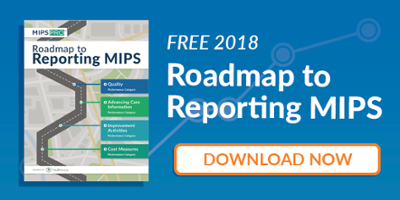
Through my work with MIPSPRO, I’m given daily opportunities to watch people reporting from the outside looking in. As a result, I’ve uncovered a few truths in reporting that providers might not notice if they’ve only ever reported through their EHRs or Claims submission. Today I want to share some of those insights with you.
Gaps can only be closed when they are monitored.
The most glaring thing I’ve learned is that people do not monitor their performance unless it is made clear and concise. While CMS publishes MIPS and PQRS data to the Physician Compare website, people tend not to use it. It’s geared for patients, and features very high-level summaries of performance. For providers, it doesn’t provide meaningful insights into performance.
Even worse, during the reporting process, clinicians using their EHR get bare-bones performance rates. In many cases, they are unable to drill down into the patient level, and have no benchmarks. Clinicians may think that documenting medications (Measure 130) for 95% of their providers would be an amazing feat, but that puts them in the bottom half of people achieving that measure. Conversely, a 95% performance rate for Diabetic Foot and Ankle Care (measure #127) would be in the top 10%. Without this perspective, providers get no usable insights about where they fall in relation to their peers.
EHRs aren’t the only ones doing providers a disservice in terms of making MIPS meaningful. Claims reporting, whether through an individual biller or a larger Practice Management software, doesn’t usually fair better. Benchmarks are a rarity, and the majority of those reporting through claims have no idea on their performance rate, reporting rate, or what patients are being reported.
A high quality registry can pull this data in and interpret it in a meaningful way, allowing providers to see their MIPS score, pinpoint date ranges of low performance, and manage data at the patient level. For someone looking to offer providers a way to see gaps, let alone empower them to close gaps, it’s a value that pays in dividends.
The only way to know about MIPS is to stay connected to CMS.
There’s no way to sugarcoat it: the MIPS program is complex. Avoiding the penalty can be straightforward, but knowing your score and the most efficient way to report requires knowing all of the rules of MIPS. A solo provider realistically will not have the kind of time that would be necessary to keep in touch with CMS and know every MIPS rule.
Registries participate in calls with CMS regularly, and they always involve surprises. During these regular calls, registries get the chance to ask CMS directly about rules in scoring, exemptions, or even special cases in reporting. It’s a time investment that ends up working out for everyone, and hopefully helps improve the MIPS process in future years. Providers also have a “translator” for MIPS problems to CMS. We have submitted countless tickets to CMS about unique situations, questions about measures, and anything and everything MIPS. As a registry, we know how to phrase our questions, we know the pages of the final rule to reference, and we get answers.
And thank goodness we do this, because this year that process clarified questions about PI (formerly ACI) measures exceptions, which in turn salvaged MIPS scores and incentives for many of our clients.
Data is the Hardest Part of Healthcare.
Registries are something of a repository of quality data. We’ve taken in files from EHRs of all sizes and quality, as well as from billing or Practice Management software and even home brewed technology solutions. This may not come as a surprise to any healthcare professional, but the quality of data tends to be mixed.
Some EHRs will have patient level data that doesn’t match their performance data. Some RCM solutions don’t archive billing data after it’s been accepted by CMS. Some data scrubbing really just involves a person reviewing your data manually. While it’s not always ideal, it’s okay.
A registry is able to push that data together and combine it into a batch of meaningful performance data. Even better, we can share insights into data tracking inconsistencies with provider groups, so that they can ensure their process is as close to flawless as possible. The end result is making the data something that can be controlled, managed, and ultimately used.


